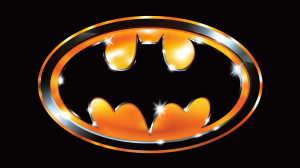When it comes to comics and manga, there are big differences to spot between the mediums. Both are separate beasts to tackle, but they do bounce off one another. Time and again, fans have found homages to comics and anime in some of their top series. And thanks to a recent interview, fans have learned how Marvel’s team in the 1980s were introduced to manga thanks to X-Men.
Videos by ComicBook.com
The tidbit was hidden in a recent interview with While Portacio, a veteran artist in the comics world. The artist recently worked with Viz Media to do cover art for an upcoming Blu-ray release. When the artist spoke with Crunchyroll about the gig, it was there he shared a little-known fact about X-Men‘s heralded run in the 1980s.
“A lot of people don’t know this, but apparently, there was a big fan in the X-Office who would work half the year in Japan and half the year in America — and I’m talking about the ’80s, okay — and he would then bring back VHS dupes of anime,” Portacio explained.

“As you know, manga and anime didn’t really become anything socially conscious in the US in the ’80s, but here we were in the X-Office because of this one person, so a lot of the X artists and writers were the first to be exposed to Macross, to Fist of the North Star; there was also Lensman, andLupin the 3rd, Miyazaki’s one (Castle of Cagliostro). And a little bit after being exposed to those videotapes, we were able to get copies of the Appleseed manga. So a lot of the experimentation that was happening at that point of time in Japan was directly being absorbed into American comics.”
As it turns out, a good bit of the artwork from the 1980s’ run of X-Men was inspired directly by manga. The experimental style was praised by readers for its innovation, but it was already being done in Japan.
“You know what’s really interesting, is that when I was in the X-Office [Marvel’s HQ for creating all the various X-Men books], we were kind of lauded as trying out these different techniques, like, I don’t know if you’re familiar with the term “Akira lines,” and that’s obviously directly from Akira, and I think some of the first times we were playing with expressing a borderline of a panel differently also came from manga and stuff,” Portacio continued.
Clearly, the give-and-take nature of art was put into play at this time. And in the past few years, manga has taken more from comics. You only have to look at the popularity of My Hero Academia to see how well Western comics are viewed overseas. And so long as the mediums play nicely, fans can look forward to reading good stories.
Which comics do you see shouting out manga these days? Or vice versa? Let me know in the comments or hit me up on Twitter @MeganPetersCB to talk all things comics and anime!








